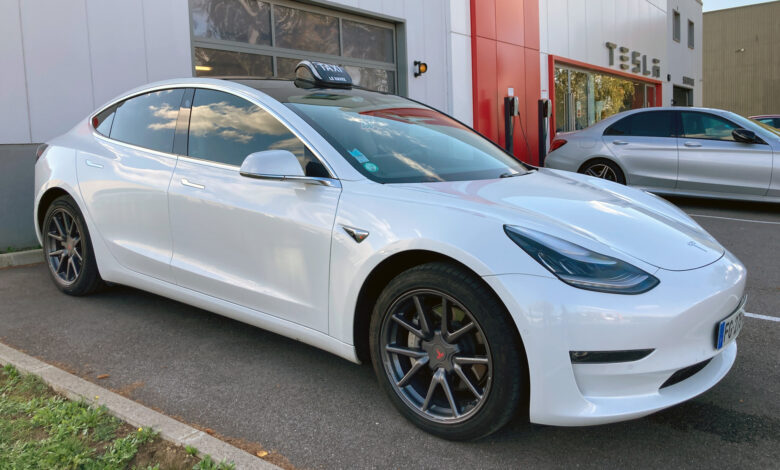When the Tesla Model 3 was introduced, many thought it was the first electric car perfectly adapted for taxi tasks. It was spacious, efficient, much cheaper than the Model S or X, with reasonably extensive autonomy, and above all, it had a network of Superchargers that make a difference. Now a taxi driver has shared his experience after 62,000 miles at the Model 3 unit controls and compares it with his previous diesel model.
This taxi driver has his base of operations in the French town of Le Havre, and after seeing the first electric cars, he thought that this was the future. So in this time, he has opted neither for gas models nor for hybrids, keeping his Skoda Superb TDI until the Tesla Model 3 Long Range finally hit the market. After 16 months he shows great satisfaction with the car and the after-sales service.
With the new car, this professional has had to get used to a new routine, such as going through the chargers regularly to get the battery to the highest possible level at any time. There are always unforeseen events in this sector, such as large trips at the least expected moment. That is why he already has a ritual of recharging in the morning to the fullest and then taking advantage of the moments of rest to inject a few kWh again.
One of the first differences from its previous diesel model is that driving an electric car is much more relaxing. You notice that after 10 hours at the wheel, you come home more rested.
Of course, this tranquility helps improve its economy even though the Model 3 is not exactly a cheap car to buy. But it makes up for it with lower operating costs, which makes the cost of ownership lower than the Skoda Superb he had before.
Considering the financing, maintenance, insurance of the vehicle, and the cost of fuel and refills, he estimates that he is saving around 400 euros per month. The Tesla costs 1,200 euros a month, compared to 1,600 euros for the Skoda. Something that means 4,800 euros a year or 24,000 euros in five years.
A figure that is even small if we take into account that it is not a taxi that makes a lot of kilometers, since it has an average of 46,000 miles per year.
As a curiosity, we can see in this taxi driver (Tesla) how he has started driving with the hubcaps on but has ended up removing them and driving with the tires in the air. Something that tells us that their savings are minimal since even a professional prefers to withdraw them.
While mechanical behavior is not usually the problem with Tesla, something significant for a taxi driver can be the question of after-sales service and the small repairs that all cars have. The difference is that with a conventional model, the technical service is a few miles away, while for Tesla’s it is not.
But this owner has had an unproblematic unit despite being one of the first to hit the market. Only some repairs have not meant loss of work hours beyond the trip above to the Technical Service. He has also made use of the Rangers. The home service that can solve a wide variety of problems, but not all.
Among the unforeseen, a problem in the loading port stands out, which caused a failure during the process when it exceeded 90% of capacity. Also, a failure in the trunk opening system at 31,000 miles, as well as that of the suspension triangles, which causes a noise when turning, as well as the change of the windshield due to a small break which forces to go through the workshop to calibrate the front cameras.
But the general conclusion is there’s a high level of satisfaction with the technical service, beyond the distance that separates you from it.
Although the car is practically new, this owner admits that he is already thinking about replacing it and wants to do it with the Tesla Model Y. An alternative that he says fits better with his job. It is somewhat taller and has a larger gate. Something that indicates that the Tesla SUV will have a lot of pull among this type of professionals.

